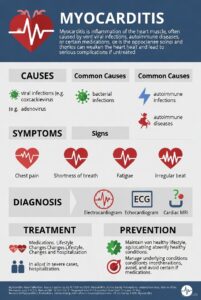Nursing and Interprofessional management
- Nursing Implementation
- Health Promotion
- Prevention of injury
- Adequate nutrition
- Early recognition of inflammation
- Immediate treatment
- Acute Intervention
- Observation
- Vital signs
- Fever management
- Drug therapy
- Aspirin
- Acetaminophen
- NSAIDs
- Corticosteroids
- RICE
- Rest
- Helps the body use its nutrients and O2 for the healing process.
- The repair process is facilitated by allowing fibrin and collagen to form across the wound edges with little disruption.
- Ice (Cold and Heat)
- To promote vasoconstriction and decrease swelling, pain, and congestion from increased metabolism in the area of inflammation
- Heat may be used later to promote healing by increasing the circulation to the inflamed site and subsequent removal of debris and localize inflammatory agents.
- Compression and immobilization
- Counters the vasodilation effects and development of edema.
- Promotes healing by decreasing the tissues’ metabolic needs
- Evaluate the patient’s circulation after application and at regular intervals.
- Swelling can occur within the closed space of a cast and compromise circulation.
- Elevation
- Elevating the injured extremity above the level of the heart reduces the edema at the inflammatory site by increasing venous and lymphatic return
- Rest
- Health Promotion




